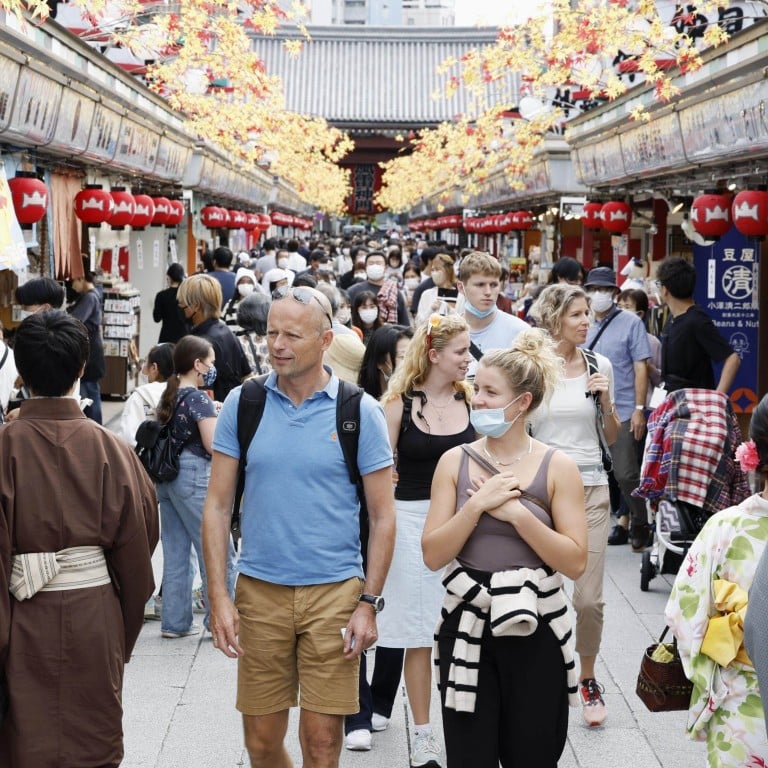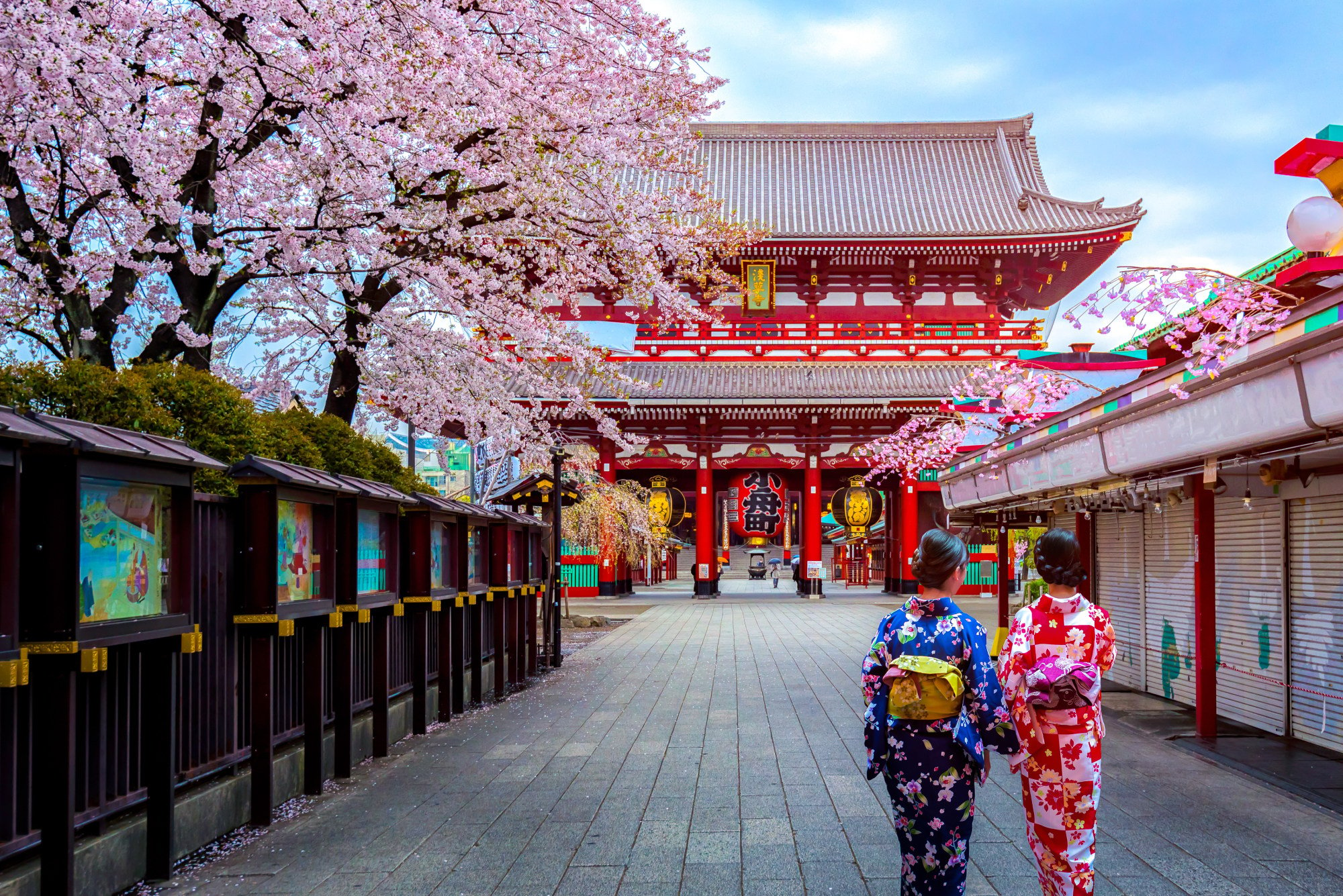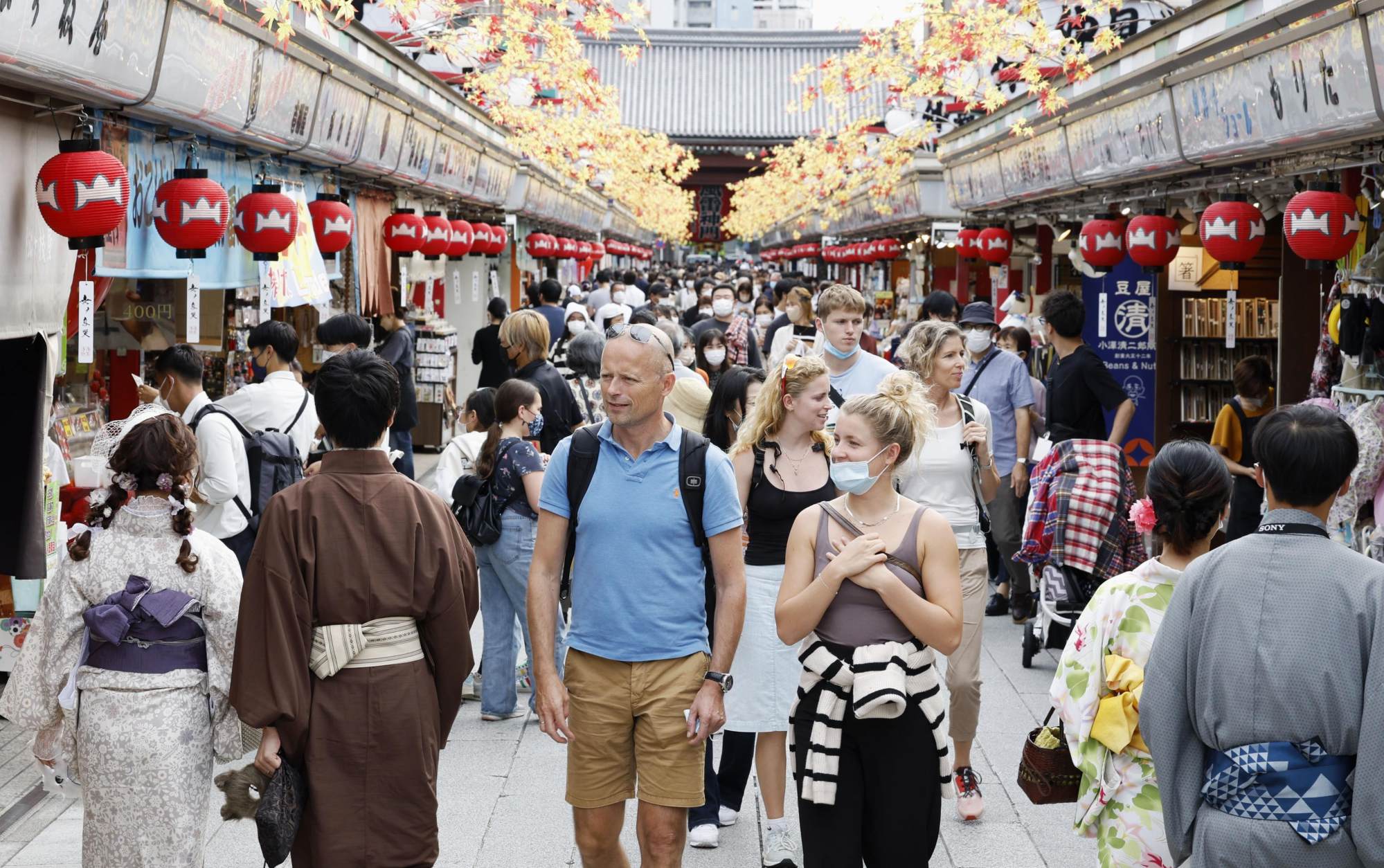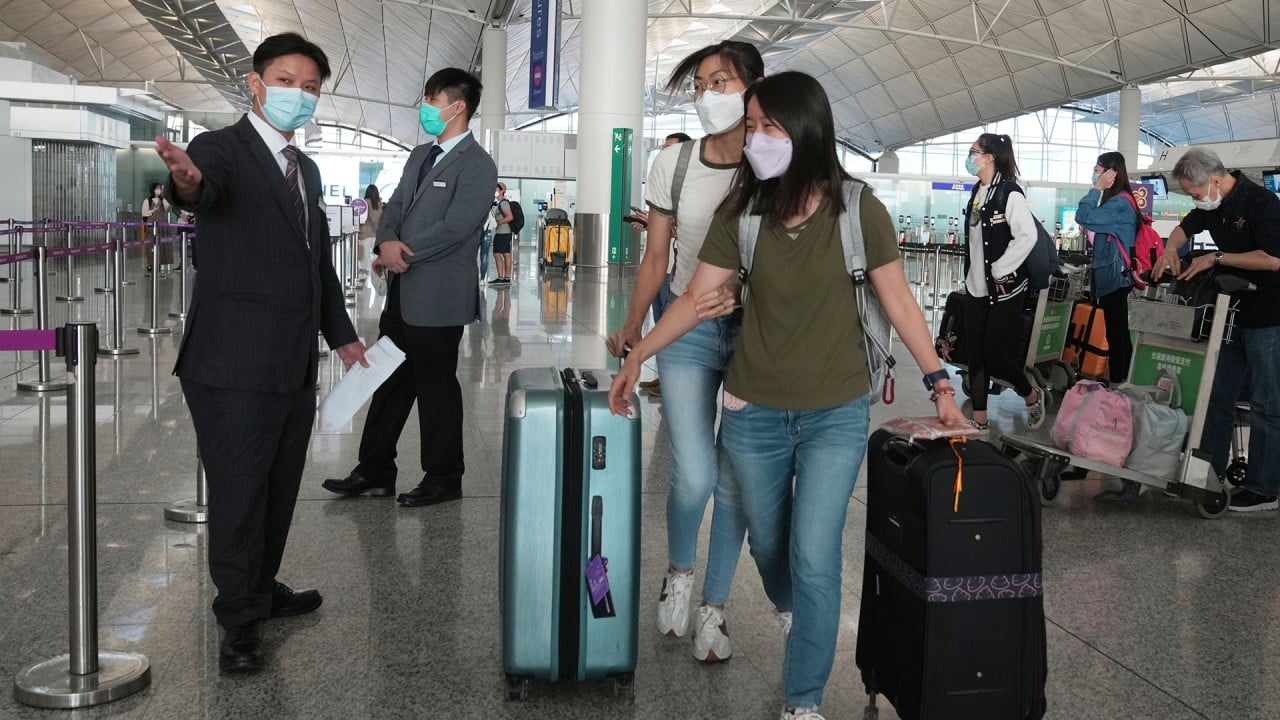
Japan is ‘rammed’ with tourists – and Chinese visitors aren’t even back in full force
- Cherry blossom season is already a success, but travel sector acknowledges that more tourism brings issues like cultural conflicts and overcrowding
- Insiders say the government has had 3 years, during pandemic, to engage with sector on staffing and infrastructure, but ‘they have failed to do that’
They also warn that overcrowding and reports of what are often politely described as “cultural misunderstandings” between tourists – American, Chinese or visitors from other parts of Asia who have little experience of Japanese social norms – and local residents will inevitably increase now Beijing has given citizens the green light to travel.
Hong Kong tour operators warn of long airport waits to clear immigration in Japan
Japan began easing restrictions on foreign tourists in October last year, welcoming 3.8 million arrivals over the course of 2022. That figure is significantly down on the record 31 million arrivals in 2019, of whom around 9.6 million were Chinese, but a massive improvement on the 245,900 reported in 2021.
There is widespread optimism that 2023 will see the recovery pick up speed, with domestic travel giant JTB Corp anticipating 21.2 million arrivals over the course of the year. That would put the nation on track to meet the government’s target of 60 million visitors in 2030.
Yet critics claim the authorities have not used the three-year hiatus for the industry to solve the problems associated with overtourism.
“I am deeply concerned about that problem and it’s something that I’ve seen for myself in the last few days,” said Avi Lugasi, owner and managing director of the Kyoto-based Windows to Japan tour company.

“The streets of Kyoto and other traditional Japanese towns that are popular with tourists, like Kanazawa, Nara or Kamakura, were simply not designed to handle this many people.”
Travel firms are also short of trained and experienced staff as so many were forced to leave the industry when it went into hibernation during the pandemic. Lugasi said he receives daily calls from foreign travellers “begging” him to find a place on his tours as many firms folded entirely.
Many in the sector, including Lugasi, perceive the weakest part of Japan’s travel industry to be the number of capable tour leaders, particularly for wealthy travellers who expect top-notch service.
“We are very, very stretched already, and when the Chinese start to travel in big numbers again, then I think the industry as a whole will be in big trouble,” he said.
Hiro Miyatake, founder of the Bear Luxe Corp network of high-end travel companies, said friction between locals and visitors was already happening and likely to be worse than before the pandemic.

At that time, residents of must-see tourist destinations complained about overcrowded public transport, boisterous behaviour, large numbers of people close to popular sightseeing spots, late-night noise and self-catering tourists not following strict rules on the separation and disposal of household rubbish.
Such issues were now prevalent again, Miyatake said. “Since the borders reopened we have been very busy and it has been difficult to keep up with demand, particularly among high-net-worth individuals who have not been able to travel to Japan for a couple of years and are keen to get back again.”
Restaurants, hotels and sights that have earned positive reviews on online sites are “mobbed with foreign travellers”, Miyatake said, but there is a backlash.
He said a well-known soba (noodle) restaurant he often worked with no longer takes bookings because of too many last-minute cancellations and no-shows for reserved tables from foreign tourists.
The pressurised job of predicting when Japan’s cherry blossoms will bloom
Upfront deposits for a table “are not a thing” in Japan, he said, “as it has traditionally been done on trust”.
“But international travellers have now made this an issue. The restaurant was apologetic but said we would just have to turn up on the day and hope they had free seats, which makes it very difficult for my company,” Miyatake said.
Hotels are also under pressure and are reluctant to turn away the regular domestic visitors they have relied on to get through the pandemic. Many are introducing a membership system prioritising frequent guests and limiting the number of rooms available for overseas tourists.
Ashley Harvey, a travel marketing analyst who has worked in Japan for more than 15 years, has seen similar problems involving the sheer number of travellers overwhelming the nation’s infrastructure.
His friend arrived at Haneda Airport in Tokyo recently, landing at 9.30pm, but only reached her hotel in the city at 3am. Queues at customs and immigration were long and “there were not enough staff on hand to process arrivals”. When she completed all the procedures, “the final train into the city had gone”.
That meant his friend had to get a taxi, in the sort of airport management failure that will inevitably put off some travellers, said Harvey. He added that there was no “magic bullet” to solve overtourism, which affects many international cities.
“But that just means that governments and tourism authorities have to work harder to at least reduce the problems,” he said. “Japan has had three years to engage with industry on issues surrounding human resources, infrastructure and so on, and they have failed to do that.”
Tokyo to open Harry Potter park, first outside Britain
The government has said it wants to encourage more foreign travellers to get away from traditional destinations like Tokyo, Kyoto or Hiroshima and explore more locations off the beaten track, but there has been little sign of that policy having an effect so far.
The main streets of Tokyo are “rammed” at the moment, said Harvey, but the side streets are largely empty.
He believes the authorities may have to introduce dynamic pricing policies in some popular locations, making the most popular sites more pricey and encouraging budget travellers to seek out lesser-known gems, while systems also need to be in place to convince people to come throughout the year instead of at peak times, such as when the cherry trees are in bloom.
Japan cannot keep encouraging people to visit in the spring to see the famous flowers “and then complain when millions of tourists turn up”, Harvey said.
“There is clearly an awful lot of pent-up demand around the world for Japan, but too much of the country is still relatively empty. Japan needs to find a way to better manage the regional and seasonal spreads.”
High hopes for Japan-Korea tourism and trade as forced labour row set to ease
He disagreed with suggestions that destinations and infrastructure would be overwhelmed as soon as Chinese travellers return in large numbers.
“I know a lot of Chinese come to Japan, but it is unfair to single out one nationality for problems that can be solved here,” he said. “And I actually like to see groups of Chinese who are visiting Japan for the first time and are clearly as excited as schoolkids and just love the culture here.
“It is up to Japan to make it easier for tourists and the travel industry here so that it can absorb the 60 million visitors that they are hoping to attract in 2030 and avoid the problems associated with overtourism,” Harvey added.


